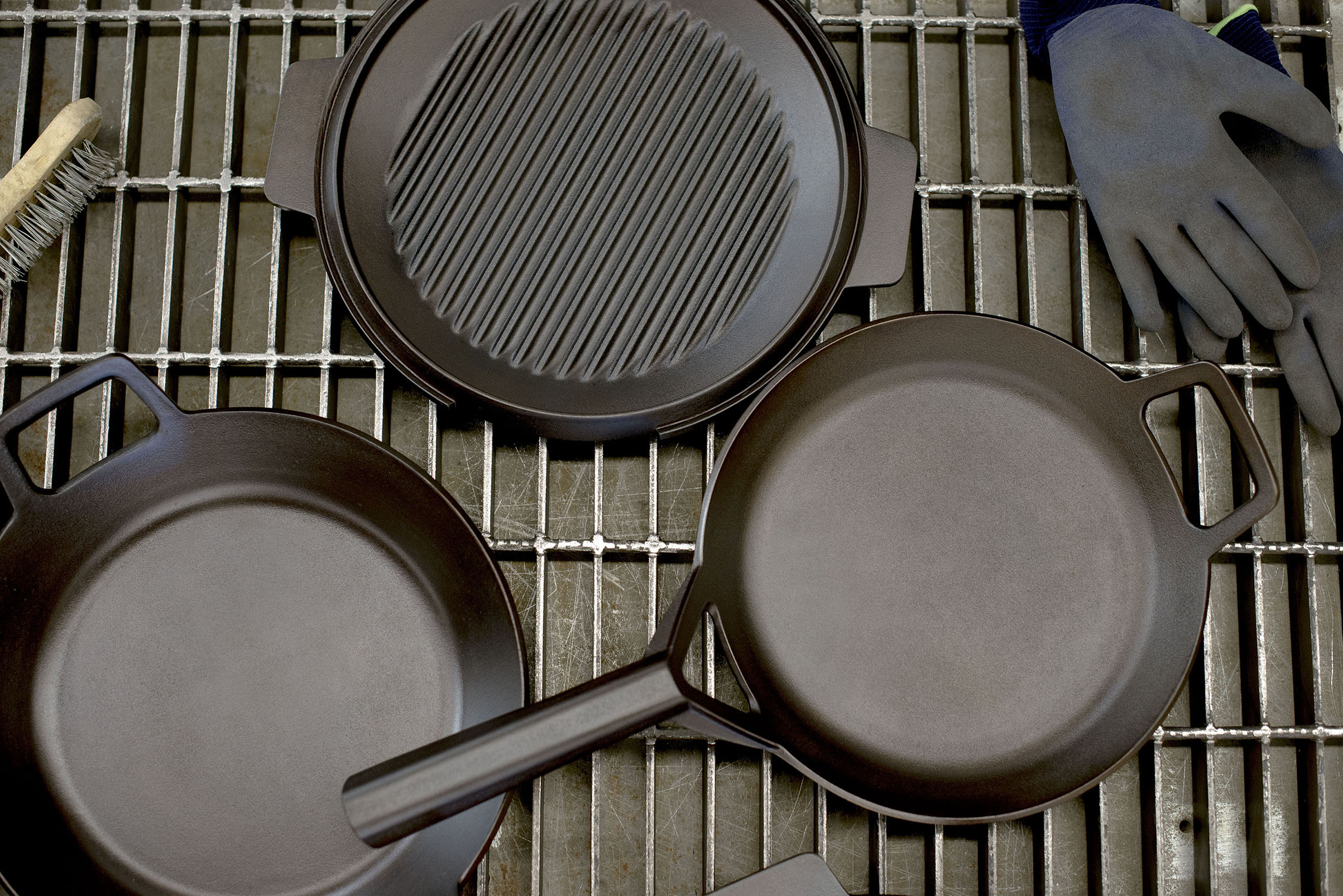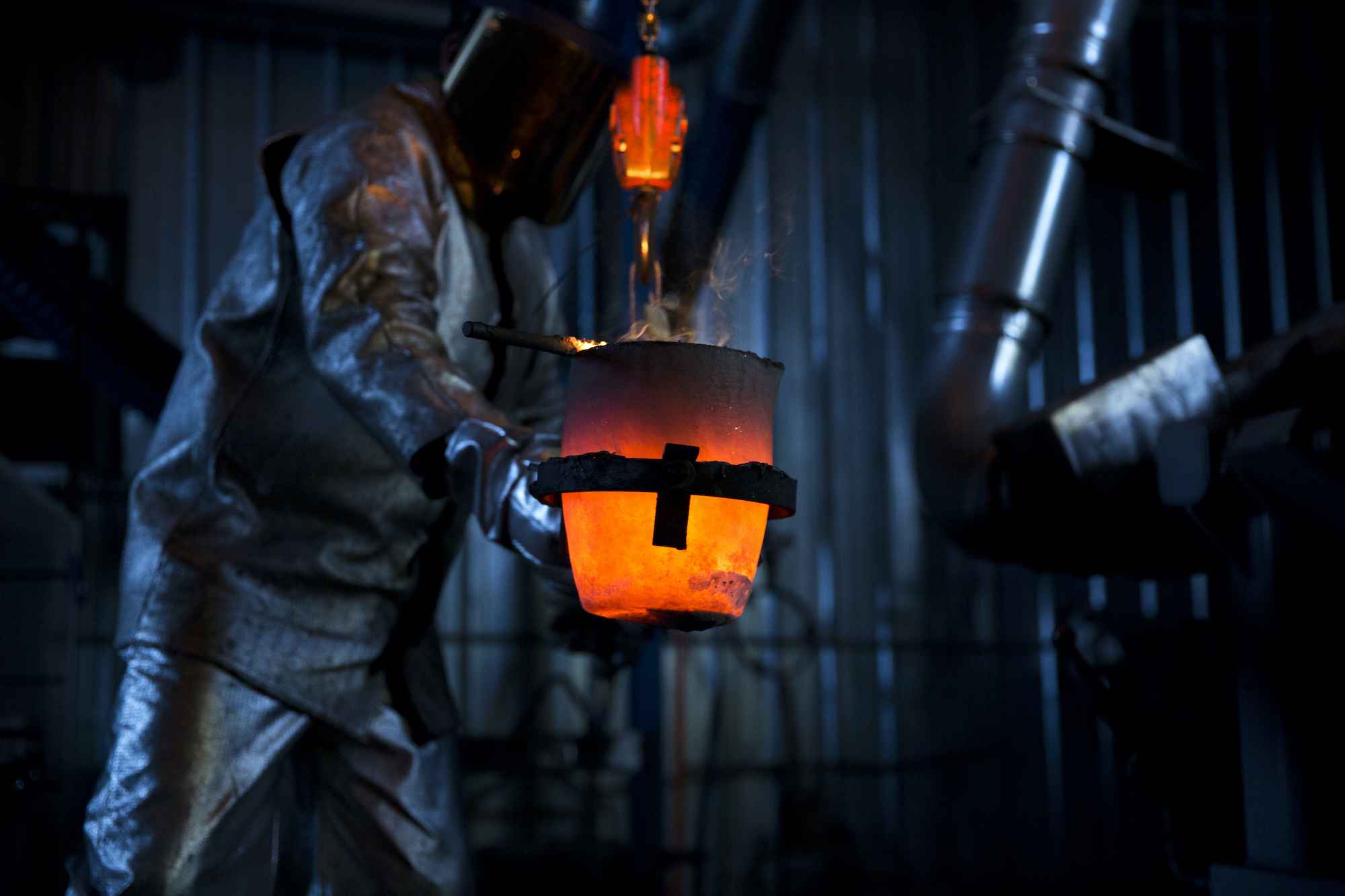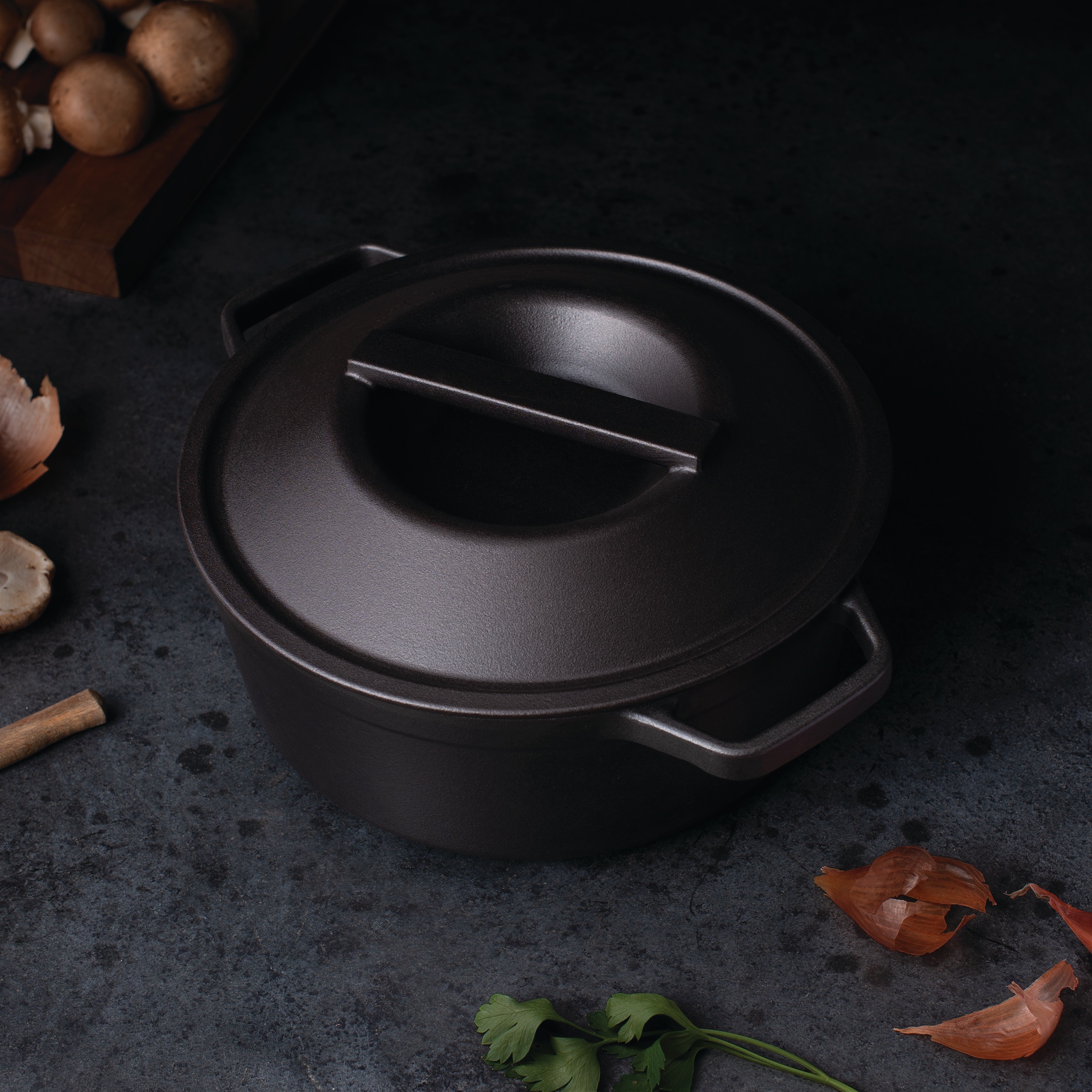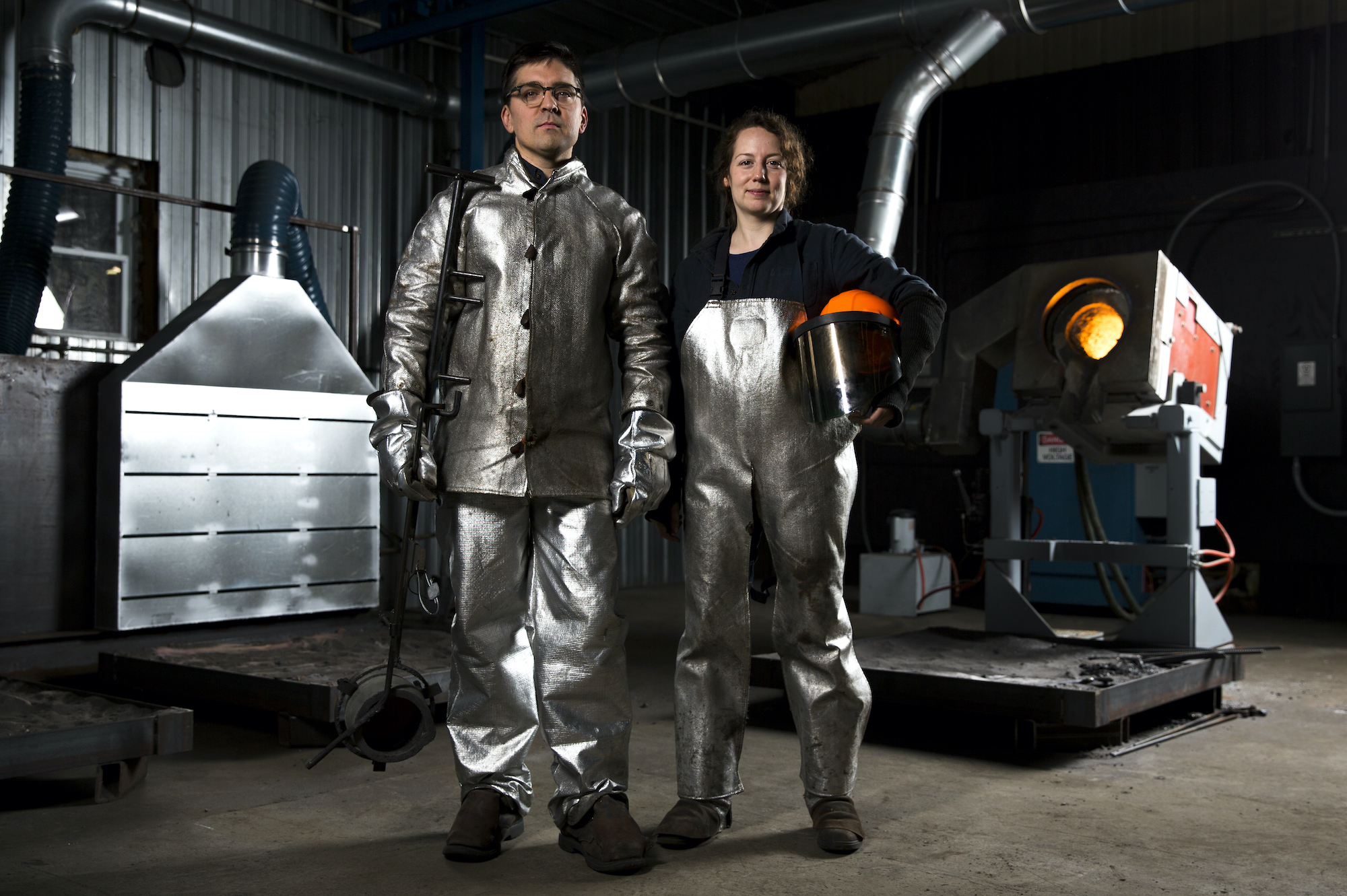For a growing number of American households, Teflon-coated pans, copper pots, or anything else for that matter other than a handcrafted cast iron skillet, would be, well, an outcast in the kitchen.
Crazy as it seems, the people who make this heavily weighted and highly popular custom-made cookware are willing to face furnaces burning at 2300 degrees Fahrenheit on a hot summer’s day, inside an old mill building they bought with their life savings, just to put one in your kitchen.
“It can be a little miserable at times,” said Liz Seru, who owns Borough Furnace with her husband, John Truex. About 10 years ago, they converted an old turbine blade factory in Upstate New York into a foundry to pursue their love for cast iron cookware. At the start, Seru, an artist, and Truex, who holds a degree in metal casting, bought vegetable oil off Craigslist to run their blast furnace, before switching to an electric induction oven.
And they’re not alone. Cast iron foundries, once as American as blue jeans and apple pie, have resurfaced all over the United States.

The Cast Iron Collector, a website dedicated to cast-iron-cooking enthusiasts, lists more than 300 cast iron foundries in the country, with a heavy concentration in the Midwest and down south where Lodge, the oldest maker of cast iron cookware in the United States, hosts popular cook-offs and a national cornbread festival in celebration of cast-iron cooking.
What’s driving this trendy revival in cookware all boils down to the simplicities of a highly sought-after taste, unparalleled durability, and old-fashioned made-in-America craftsmanship. Some foodies have quite literally lost their taste for modern lightweight stick-free cookware, which, besides, being short-lived, doesn’t quite offer the same flavorful results of cast iron.
Like a fine wine, the taste of food cooked on the same cast iron pan gets better with time. It’s called seasoning, a somewhat scientific phenomenon that naturally improves the surface of your skillet as you use your skillet more and more.
“Basically, the fat and oils in the food adhere to the pan and polymerize to form a new, smoother cook surface,” Seru said. “It’s better than when it was brand new.”
Forged cast iron cookware is also made out of hot iron poured into a mold and then cooled, meaning it’s all crafted in one piece, with no separate handles or bottoms that may eventually come apart.

In addition to skillets, cast iron foundries like Golden’s Cast Iron in Columbus, Georgia, have revived an authentic cast iron cauldron-like cooker—yep, the kind that brings to mind a steamy, bubbling witch’s brew.
Cast iron skillets are also popular among campers who want a little more than hot dogs and beans over an open fire. A skillet made by Finex, an Oregon-based foundry that prides itself on being “100 percent American-made,” appears on multiple published lists for must-have camping gear.
“We make our cast iron a little bit thicker than most,” said Michael Griffin, Finex’s brand director. “When you cook over a grill and open fire, you’re going to have hot and cool spots. That thicker cast iron helps even out the cold and hot spots.”
Finex’s other big attraction is its patented stainless steel spiral handles that stay cool longer and cool down faster. Even in the old days, cast iron skillets didn’t have such a feature. Griffin said the company got the idea from old-fashioned wood stoves that had similar handles on their doors.
“We wanted to reinvent the cast iron skillet,” said Griffin. ” It’s a very classic, time-honored American piece of cookware, but it hadn’t changed in design for a couple of hundred years.”
Cast iron cookware is now even topping wedding registries over coffee machines and vacuum cleaners.

The revival of the beefy, indestructible kitchenware is so trendy that it has inspired blogs with such titles as “Why I’m Replacing My Skillets With Cast Iron” and articles on how to spot an authentic vintage cast iron skillet at a roadside antique shop.
Wagner and Griswold cookware are like the Ming Dynasty vases of antique cast iron skillets. One piece can fetch up to $1,500. An authentic “spider skillet” originally designed by Paul Revere and made up until the 1890s can be worth up to $8,000.
There are, of course, varying tiers of cast iron skillets, depending on the level of hands-on craftsmanship. Borough Furnace is probably one of the most handcrafted foundries in the country: they do only about 15 iron pours per day.
The Finger Lakes-based company is working to catch up on orders for its 10.5-inch frying skillet, which sells for $300. The company also custom-forges porcelain-enameled dutch ovens and something called cazuelas, ramekin-like cookware made out of recycled cast iron—part of Seru and Truex’s ironclad commitment to keeping their foundry as environmentally friendly as possible. They are even voluntarily carbon emissions-certified.
“We do our best to reduce our footprint,” said Seru. “We want to preserve American tradition as much as America itself.”
Alice Giordano is a former news correspondent for The Boston Globe, Associated Press, and New England bureau of The New York Times. Alice loves to cook her vegetarian cuisine on the vintage cast iron skillet she inherited from her mom.













